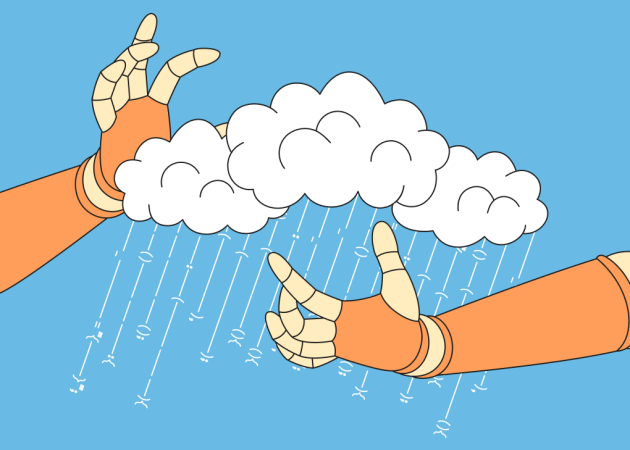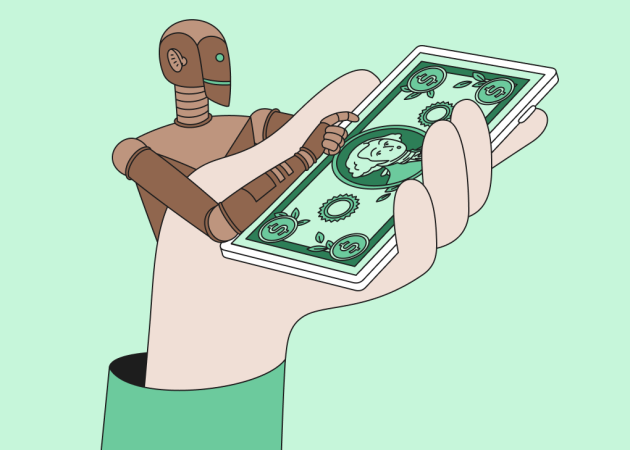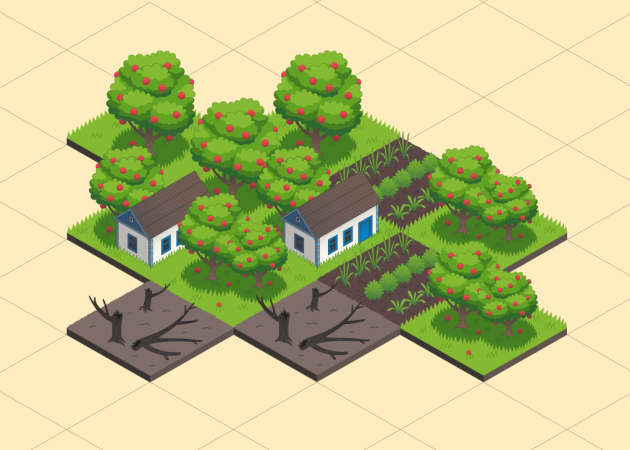
Green UX Meets Agile Development: How We Built the Reroot Donation App
Contents
Contents
If you ever wondered what our slogan “Your Tech Partner for Good” exactly means, the Reroot donation app project is a great example of how that promise translates into reality. In addition to the Reroot case study, this article uncovers how technology helps solve real-world struggles and enables people from anywhere in the world to give a helping hand to someone in need in a very clear and trustworthy way.
Read on to find out how we applied the green UX and agile development principles to build an app that is both impactful and resource-efficient. More importantly, find out why these approaches are worth considering when you’re on the lookout for mobile app development services.
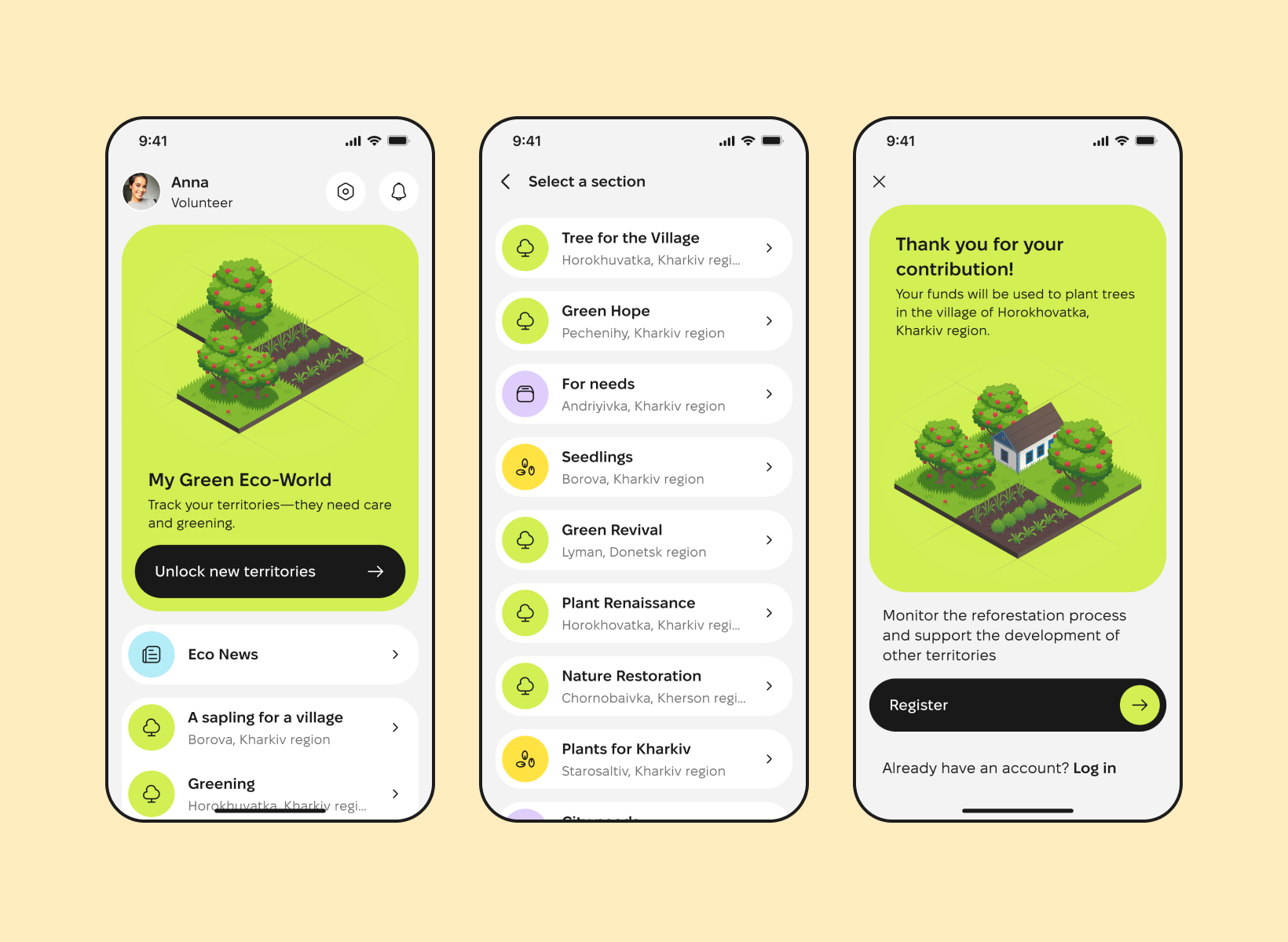
The Reroot Mission: Tech for Restoring Communities
Rescue Now has been our longtime partner, connecting the donors of Beetroot’s Aid for Ukraine fund with reliable grassroots volunteer initiatives to ensure maximum impact per donated cent. From delivering basic necessity kits to the frontline regions to supporting the rescue mission during the flood in the Kherson region caused by russia (yeah, the small “r” is intentional) blowing the Kahovka dam, our joint projects have been wide-ranging.
Reroot was born from a simple but powerful idea: restoring Ukrainian communities devastated by the russian terrorist war starts with giving people the ability to grow food again. By donating fruit trees and vegetable seeds, the platform empowers families in the de-occupied regions to become more self-sufficient. And it wasn’t long till we came up with the idea to foster this process further by involving tech.
This “tech for good” mission informed everything, from UX design choices to technical architecture. Each design and development decision had to support a user experience that was secure, resource-efficient, and mission-aligned. Because as a donation platform, trust and usability were paramount.
The app offers a fun gamification element: by donating to the cause, users get virtual tree seedlings, which they can plant and nurture in the app. Reroot volunteers will make those trees real by planting them in the Balakliya and Barvinkove communities of the Kharkiv region. Donors can follow the growing progress through the app as volunteers add photo and video updates.
When Beetroot suggested building a donation app, we were immediately on board. Our missions align really well, so we knew that it wouldn’t be just another app, but a useful tool to help people affected by war. Having partners who share your values keeps everyone on the same page throughout the development process and ensures the result makes a real difference. Alignment like this is often overlooked, but I’m sure it’s critical to consider in any collaboration
Anna Kerika,
Fund Director, Rescue Now
Green UX: Designing for Sustainability and Efficiency
So, what exactly is Green UX? Basically, it’s about designing digital products that minimize environmental impact while maximizing usability and performance. In practice, this means creating eco-friendly UX that is fast, efficient, and works even on older devices or low-bandwidth connections.
For the Reroot app we applied green UX in the following ways:
- Optimized donation flow: fewer steps, clearer CTAs, and faster transactions.
- Energy-efficient architecture and UX elements: compressed media, smart caching, lightweight frameworks, and energy-saving color palette.
- Accessibility-first design: inclusive use for people with disabilities, users in rural areas, or with limited connectivity.
Research shows that users directly benefit from these choices. For example, according to the data published by the International Journal for Multidisciplinary Research, 53% of mobile users abandon apps that take more than three seconds to load.
For more insights into green UX and how to start applying it in your web and mobile development projects, see our article Green UX Explained: The New Black in Clean Energy Tech.
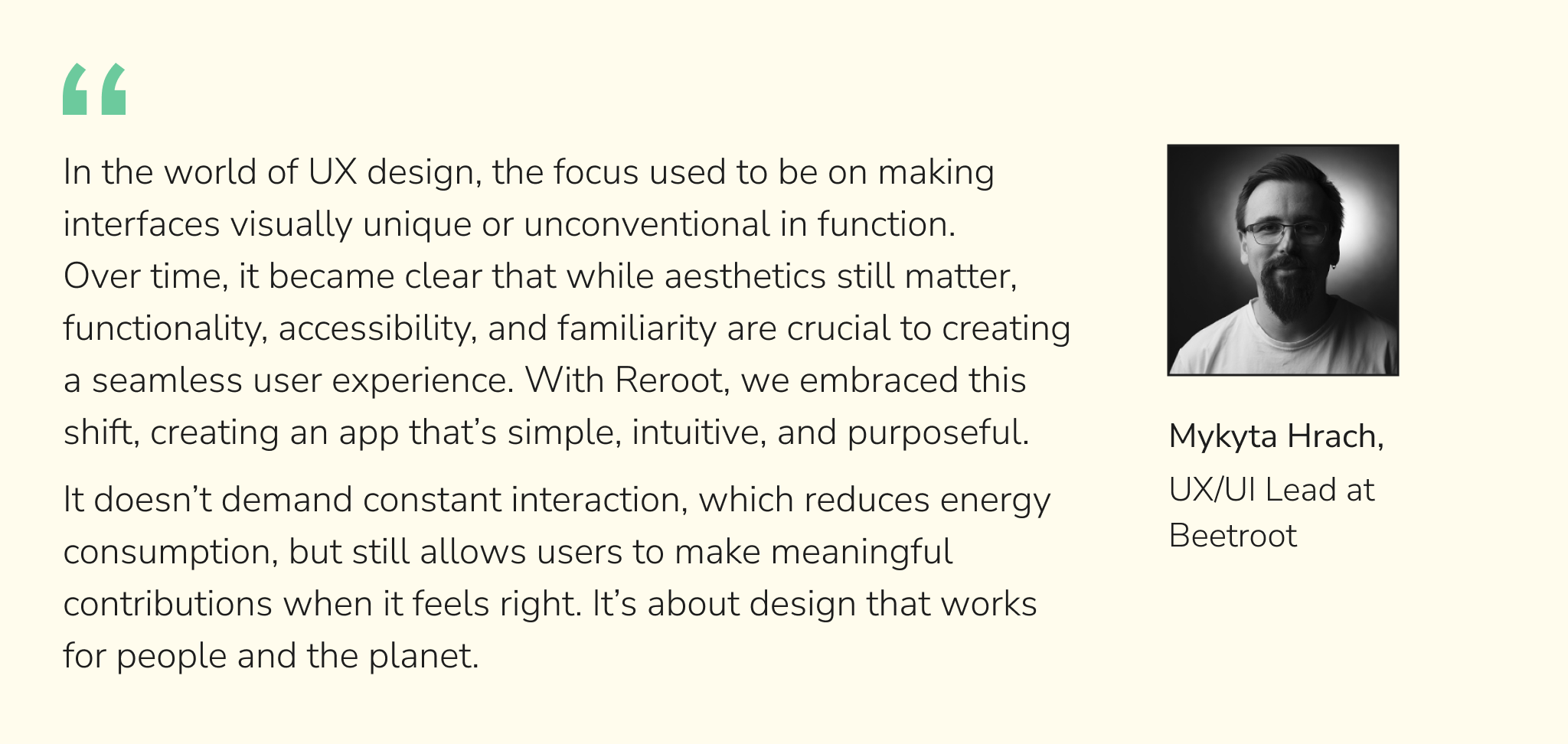
Agile Development: How Iteration Works for Sustainability
Building sustainably also means building smart. That’s where agile UX and development come in. By following a UX agile process, teams can test and optimize early, validate with users, and avoid unnecessary development waste.
For Reroot, our agile UX design and development approach meant:
- Organizing discovery workshops with Rescue Now to define goals and KPIs (e.g., donation completion in less than two minutes).
- Testing early prototypes of the donation flow with small groups of users.
- Optimizing features sprint by sprint rather than building everything upfront.
With this interactive approach, we avoided over-engineering and kept the app development process lean, adaptable, and user-centered.

How We Built the Reroot Donation App
Discovery
First of all, we sat down with the Rescue Now team to discuss the initial idea, stakeholders, their challenges, and how the app should solve them.
Design & Prototype
Our design team then created a complete flow map to ensure that each path taken by the user is optimized for minimal clicks, screen transitions, and loading times. The next step was creating wireframes with minimalist layouts and intuitive interaction elements. It was critical for us to follow the principles of circular design thinking and avoid “dark patterns” to ensure clarity and user trust.
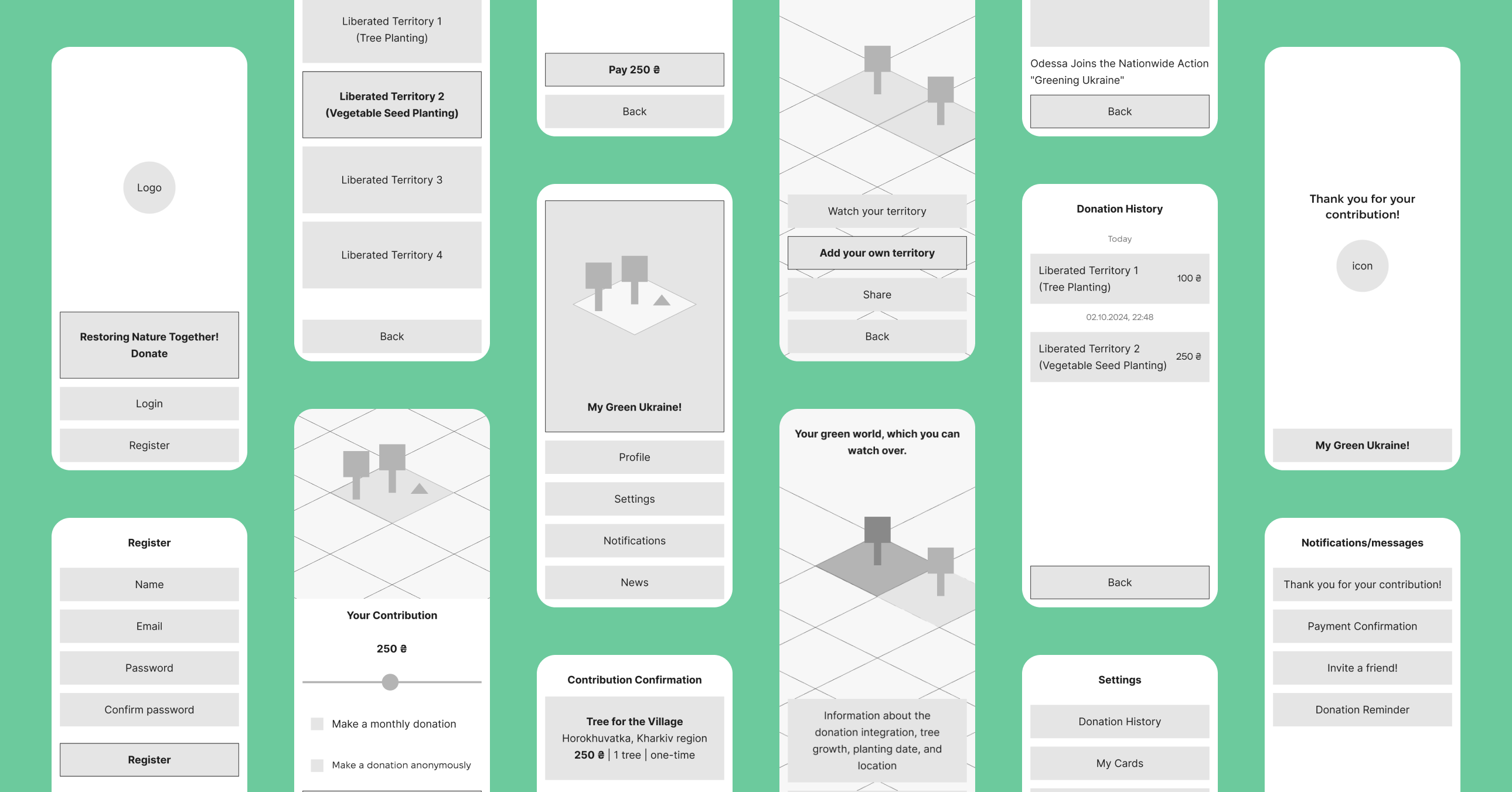
Agile Sprints
To bring the project to life, we assembled a flexible development team, consisting of a Project Manager, a Mobile Developer, a UI/UX designer, and a Business Analyst. Two-week sprints allowed us to quickly iterate on modular features and UX flow adjustments. We chose Flutter and Firebase as the core technologies.
Testing & Refinement
From donation flows to accessibility and load times, we tested the app through and through to ensure it meets benchmarks for both usability and resource-efficiency. After that, it was published on Google Play and the App Store.
Launch & Beyond
Post-release, the app has been continuously monitored for both engagement and sustainability metrics, such as load speed and data consumption.
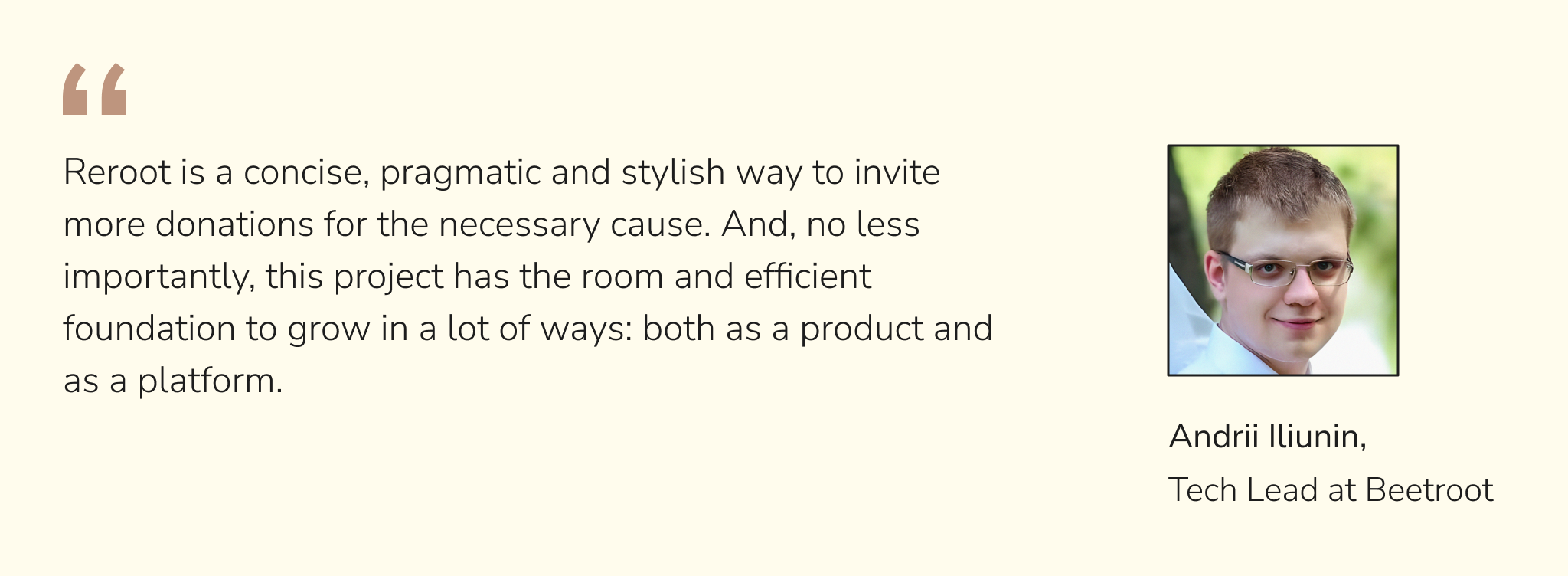
Challenges and How We Solved Them
- Balancing visual appeal with performance
We used vector graphics, compressed assets, and lightweight frameworks to make sure we didn’t sacrifice design for speed or vice versa.
- Breaking through the digital fatigue and saturation
Our simple yet sweet gamification model, inspired by the 90s classics Tamagotchi, was the solution.
- Building trust in donation flows
To ensure trust and security, we designed transparent confirmation screens and applied secure transaction protocols that comply with major data protection standards.
- Managing stakeholder expectations
Agile UX integration and iterative development enabled us to keep all partners aligned.
- Technical sustainability
We stuck to the circular design thinking and used caching, compression, and modular APIs to keep infrastructure demands low. Firebase, which our developers chose for the backend, provides both scalability and security as Reroot grows.
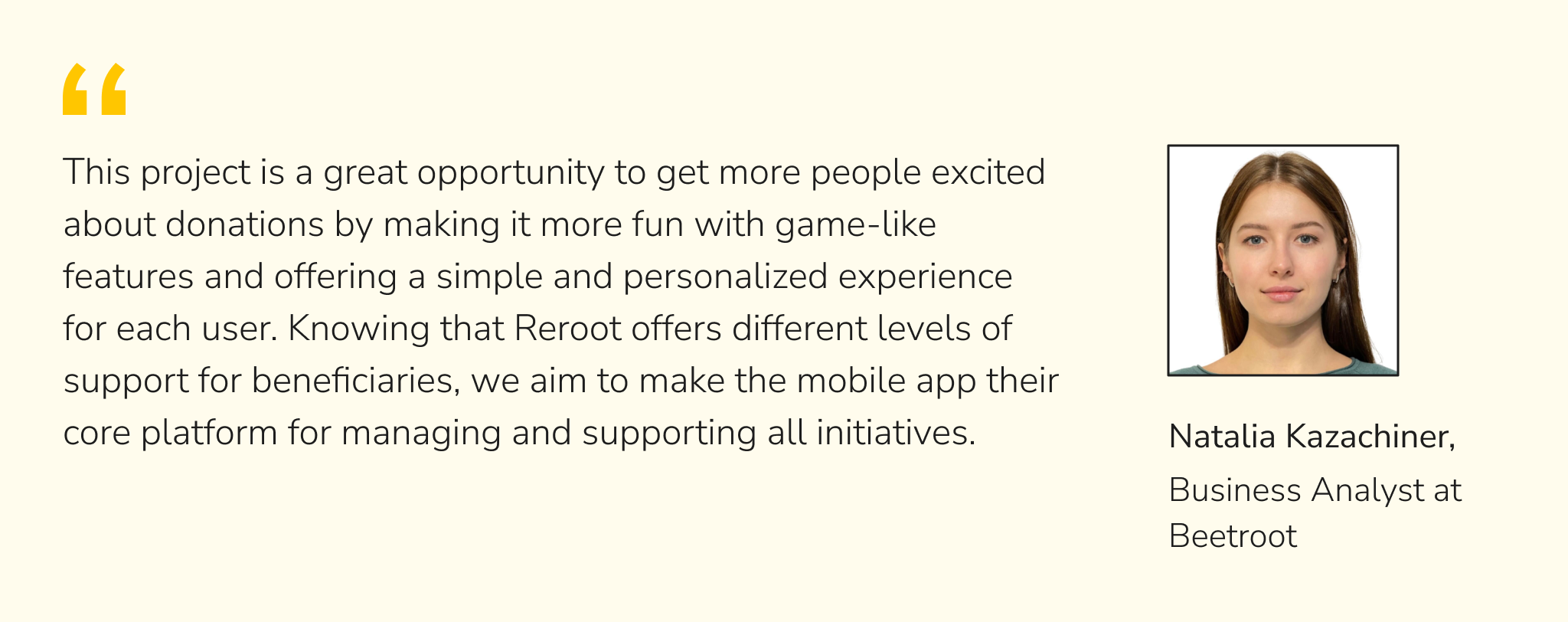
Mobile App Development Takeaways
- Green apps aren’t just for NGOs or companies operating in the climate tech sector. Any app can benefit from greater energy-efficiency, higher retention, and improved accessibility.
- Green UX leads to better performance and a stronger user experience.
- The combination of UX and agile development methods works like a charm for ESG-conscious companies: small, frequent iterations help reduce waste.
- The Reroot case illustrates what sustainable app development is in practice and how it aligns with social impact to deliver tangible value.
If you’re considering your next app, the takeaway is simple: adopting agile UX design with a sustainability mindset helps you build products that are efficient, scalable, and trusted by users.
FAQs
How does Agile support sustainable UX?
Agile’s iterative nature allows for early testing, continuous improvement, and reduced waste, making it easier to embed sustainability into the process.
Do only green apps benefit from sustainable design?
No. Even enterprise and consumer apps gain from improved efficiency, faster load times, and reduced infrastructure costs.
What is Green UX in app development?
Green UX uses design principles that minimize energy use and resource consumption while maximizing accessibility and user experience.
What metrics should teams track for sustainable apps?
Data usage per session, load speed, energy consumption benchmarks, and accessibility scores are good starting points.
Subscribe to blog updates
Get the best new articles in your inbox. Get the lastest content first.
Recent articles from our magazine
Contact Us
Find out how we can help extend your tech team for sustainable growth.




